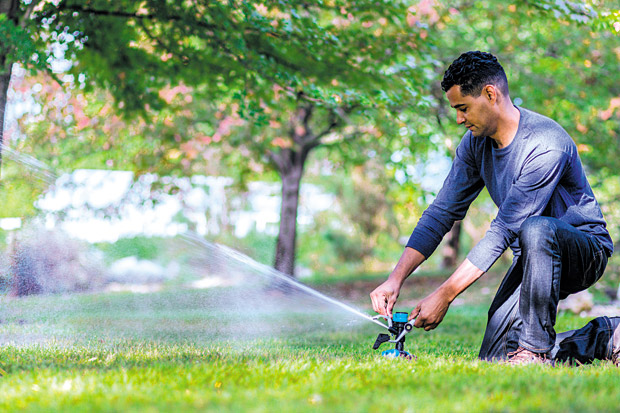Spring is in full bloom, but are your plants keeping pace? If the answer is anything but a resounding yes, don’t worry. There’s still plenty of time to get into the spirit of the season and grow your most beautiful bed of flowers.
“There’s nothing like the start of the season,” said Emily Murphy of Pass the Pistil blog. “I love planning my space, buying seeds and starts, and making sure I have the right tools to make the gardening season a success. Before I start any project, I do a quick inventory to be sure I have everything I need, like my circular sprinkler. It makes customizing water coverage easy, with shape control collars that move to mirror the area you want to water, which is a real lifesaver throughout the season.”
A lush bed of flowers or a row of beautiful plants is an instant focal point in any outdoor space. To help create a flourishing bed that everyone will notice, follow these easy tips.
•Plant based on your zone. Not all flowers succeed in the same weather conditions, which makes planting based on what grows best in your geographical area crucial.
•Preparing the soil. Each plant has different soil requirements. If you’re looking to complement your garden with vegetables like artichokes, you should be sure the soil crumbles and doesn’t clump together when squeezed in your hand.
If you wish to plant chrysanthemums, well-draining soil with consistent moisture is essential. In both cases, regular watering helps bring your soil to the right consistency. The Gilmour Thumb Control Watering Nozzle with Swivel Connect offers eight spray patterns that let you water individual plants — or their bases — perfectly with a swivel connection to reduce hose twisting and kinking.
•Plant properly. Similar to zone and soil, the depth and spacing of the holes you dig also vary per plant. Hydrangeas, for example, should be planted in a hole that is 2 feet wider than their root ball and shallow enough so that it sits slightly above the ground. This way, once filled in, water will drain away from the plant.
On the opposite end of the spectrum, lettuce seeds can be planted in a much smaller space, roughly one quarter to one half inch deep in the soil. Thin leaf lettuce seeds can be planted 4 inches apart, while romaine lettuce seeds should be planted 6 to 8 inches apart. Following the guidelines for each type of plant is the best way for them to get a healthy start to the season.
•Apply the right amount of water. Water is essential for the growth of plants and herbs, but the proper quantity varies drastically depending on what you’re growing. For tender herbs like basil, dill and cilantro, use plenty of water, about 1-2 inches per week. For hardy herbs like rosemary, thyme and mint, be sure to let the soil dry out between watering. To navigate around plants smoothly, use a Flexogen Hose. It’s durable and kink-resistant, so you can weave throughout the garden with ease.
Successfully growing spring plants requires a strategy as diverse as the plants themselves, so it’s important to learn as much as you can about each plant before diving in. For more helpful gardening tips and information, visit Gilmour.com.
This article is courtesy of Brandpoint.
